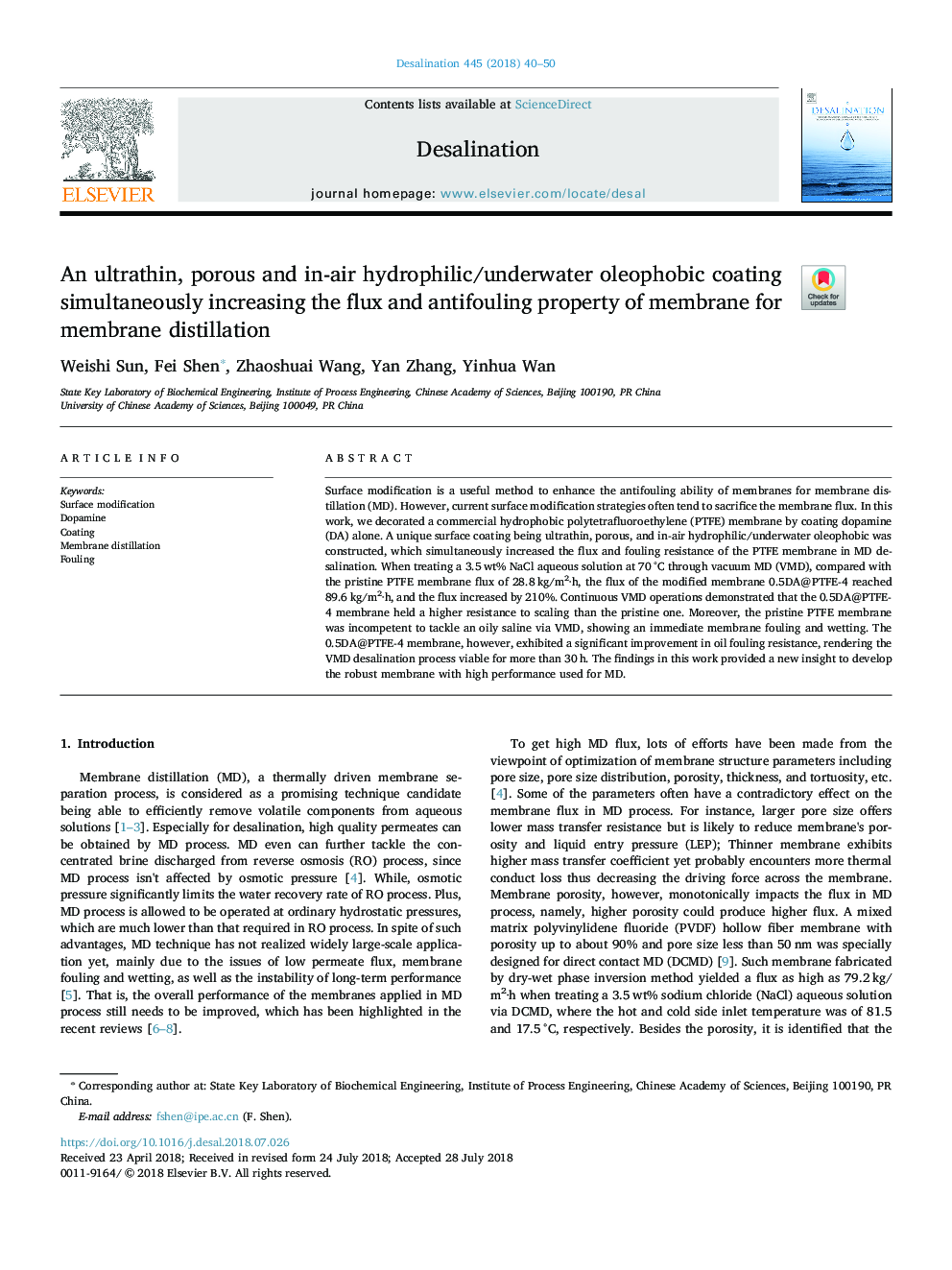| Article ID | Journal | Published Year | Pages | File Type |
|---|---|---|---|---|
| 7007608 | Desalination | 2018 | 11 Pages |
Abstract
Surface modification is a useful method to enhance the antifouling ability of membranes for membrane distillation (MD). However, current surface modification strategies often tend to sacrifice the membrane flux. In this work, we decorated a commercial hydrophobic polytetrafluoroethylene (PTFE) membrane by coating dopamine (DA) alone. A unique surface coating being ultrathin, porous, and in-air hydrophilic/underwater oleophobic was constructed, which simultaneously increased the flux and fouling resistance of the PTFE membrane in MD desalination. When treating a 3.5â¯wt% NaCl aqueous solution at 70â¯Â°C through vacuum MD (VMD), compared with the pristine PTFE membrane flux of 28.8â¯kg/m2·h, the flux of the modified membrane 0.5DA@PTFE-4 reached 89.6â¯kg/m2·h, and the flux increased by 210%. Continuous VMD operations demonstrated that the 0.5DA@PTFE-4 membrane held a higher resistance to scaling than the pristine one. Moreover, the pristine PTFE membrane was incompetent to tackle an oily saline via VMD, showing an immediate membrane fouling and wetting. The 0.5DA@PTFE-4 membrane, however, exhibited a significant improvement in oil fouling resistance, rendering the VMD desalination process viable for more than 30â¯h. The findings in this work provided a new insight to develop the robust membrane with high performance used for MD.
Related Topics
Physical Sciences and Engineering
Chemical Engineering
Filtration and Separation
Authors
Weishi Sun, Fei Shen, Zhaoshuai Wang, Yan Zhang, Yinhua Wan,
